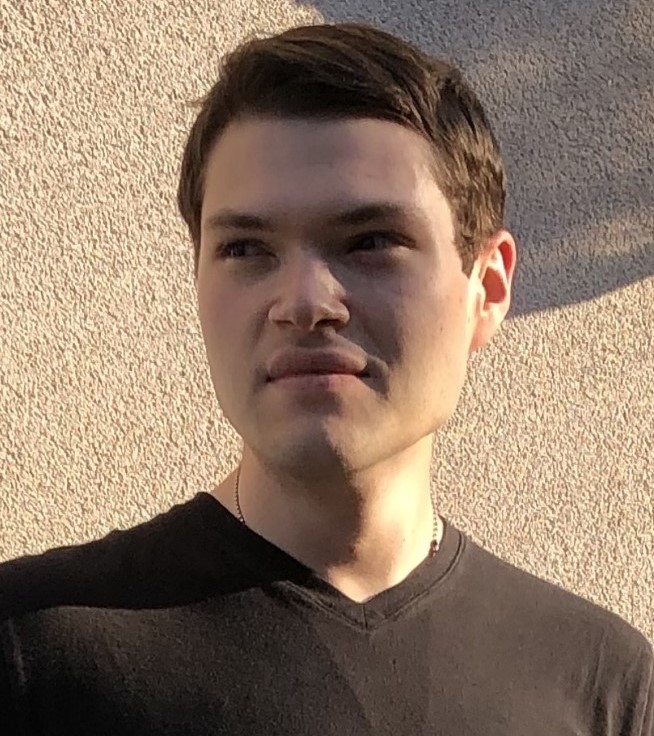Publications and Projects
Articles
Published in Monthly Notices of the Royal Astronomical Society, 2024
We use state-space models to distinguish between different states in astronomical sources with count data. Joint work with David A. van Dyk, Vinay L. Kashyap, and Aneta Siemiginowska.
Recommended citation: Zimmerman et al (2024). Separating States in Astronomical Sources Using Hidden Markov Models: With a Case Study of Flaring and Quiescence on EV Lac. Monthly Notices of the Royal Astronomical Society. 534(3):2142-2167. https://academic.oup.com/mnras/article/534/3/2142/7754163
Published in Journal of the American Statistical Association, 2023
We develop an efficient algorithm to fit HMMs with multivariate observations distributed according to state-dependent copulas. Joint work with Radu V. Craiu and Vianey Leos Barajas.
Recommended citation: Zimmerman et al (2023). Copula Modeling of Serially Correlated Multivariate Data with Hidden Structures. Journal of the American Statistical Association. 119(548):2598-2609. https://www.tandfonline.com/doi/full/10.1080/01621459.2023.2263202
Under revision
We construct a family of absolutely continuous copulas whose members can exhibit highly pathological behaviour. Joint work with Michaël Lalancette.
Recommended citation: Lalancette and Zimmerman (2022). A New Family of Smooth Copulas with Arbitrarily Irregular Densities. Under revision. https://arxiv.org/pdf/2204.04336.pdf
Course Projects
As part of the direct-entry PhD program at the University of Toronto, I was required to complete a year of graduate coursework in addition to the standard PhD requirements. I was fortunate to have access to a wide selection of engaging courses, all taught by exceptional professors in the faculty. Each of these courses included a significant project or report, which I worked on with the same dedication as any research project; I'm including those projects here, in case they might be of interest to others. (Note: I take no responsibility for the many mistakes that I'm sure I made in these projects.)
STA4531H - Information Geometry (Prof. Leonard Wong, Fall 2022)
In this project, we critically examine the intersection of copulas and information geometry through a review of two key papers. The first paper explores variational Bayes inference using copulas by integrating a number of information-geometric principles, while the second investigates clustering multivariate time series by comparing divergences between copulas. Our report evaluates the theoretical contributions and practical implications of these works, highlighting their limitations and the challenges inherent in combining these two seemingly unrelated fields. (Download)
STA4508H - Topics in Likelihood Inference (Prof. Nancy Reid, Winter 2022)
In this project, we delve into a foundational paper on Edgeworth expansions and saddlepoint approximations by Barndorff-Nielsen and Cox (1979). Our focus is on tracing their derivations and discussing their statistical applications, including conditional likelihood inference and likelihood ratio tests within exponential family models. We follow their exposition closely, providing additional clarity on key derivations and examples, while highlighting the significant impact of their work on the development of modern asymptotic techniques in statistics. (Download)
STA4528H - Dependence Modelling with Applications to Risk Management (Prof. Silvana Pesenti, Winter 2021)
In this report, we review and implement an algorithm of Hofert for sampling from nested Archimedean copulas. We outline the foundational theory of Archimedean and nested Archimedean copulas, including their stochastic representations and sampling challenges. We then apply the sampling algorithm to a range of nested copulas, illustrating its computational efficiency and flexibility across different hierarchical structures. Our simulations highlight the algorithm's strengths, as well as potential limitations when working with non-standard Archimedean generators, offering insights for future applications and improvements. (Download)
MATH1128H - Topics in Probability: Random Matrices and Random Planar Geometry (Prof. Bálint Virág, Winter 2021)
In this project, we simulate and analyze determinantal point processes (DPPs), a class of random point processes characterized by repulsion. We generate realizations of DPPs including the Gaussian unitary ensemble, circular unitary ensemble, complex Ginibre ensemble, and configurations of non-intersecting random walks. We compare the observed distributions to theoretical joint densities, which allows us to highlight the characteristic repulsion of these processes. (Download)
STA4519H - Optimal Transport (Prof. Leonard Wong, Fall 2019)
In this report, we give an overview of the transport map MCMC algorithm, which integrates the theory of optimal transport into MCMC sampling to improve efficiency in exploring complex target distributions. We discuss the algorithm's use of transport maps to adaptively refine proposal distributions, thereby enhancing sampling performance (particularly in high-dimensional settings). We also examine the theoretical guarantees of ergodicity for the algorithm and discuss the potential for parallelization and future directions for extending the method to large-scale Bayesian problems. (Download)
STA3431H - Monte Carlo Methods (Prof. Jeffrey S. Rosenthal, Fall 2019)
In this project, we explore methods for estimating expectations and variances of functionals with respect to the limiting distribution of the Anderson-Darling test statistic under the null hypothesis. We derive the density function for this complex distribution and implement efficient algorithms in R to compute it. We then evaluate the effectiveness of random-walk Metropolis, Metropolis-Hastings, and parallel tempering algorithms in sampling from the distribution. (Download)
STA2101H - Methods of Applied Statistics I (Prof. Jerry Brunner, Fall 2018)
In this project, we provide an introduction to the c-statistic, a measure of discrimination particularly suited to logistic regression. We discuss its advantages over pseudo-R-squared measures and its equivalence to the area under the ROC curve. Through practical examples, such as model selection on a dataset of student grades, we demonstrate the c-statistic's utility while addressing the potential of overfitting. (Download)
